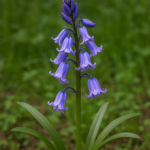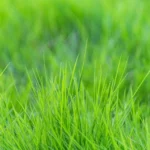
The Florida Yew (Taxus floridana) is a unique and ecologically significant tree native to the southeastern United States. Known for its distinctive appearance and cultural importance, the Florida Yew plays a vital role in its ecosystem and has historical significance in Native American traditions. However, it faces challenges such as habitat loss and declining genetic diversity, leading to its protection under the Endangered Species Act. Understanding the various aspects of this tree, from its planting zones to ongoing conservation efforts, highlights the importance of preserving this remarkable species for future generations.
Species Classification: The Florida Yew (Taxus floridana) belongs to the genus Taxus, which includes several species of yews. Taxaceae, the family it belongs to, is known for its coniferous trees and shrubs, which are characterized by needle-like leaves and fleshy fruits. The Florida Yew is distinct from other yew species due to its specific adaptations to the southeastern U.S. climate and its unique ecological requirements. This classification highlights its importance within its genus and family, particularly regarding conservation efforts.
Native Range: The Florida Yew is primarily found in the southeastern United States, with its range concentrated in Florida and extending into southern Georgia. This region provides the moist, well-drained soils and warm climate that the species prefers. The natural habitats include mixed hardwood forests, where it often grows alongside other native species. Understanding its native range is crucial for conservation strategies, as it helps identify areas that are essential for the species’ survival and where habitat restoration efforts should be focused.
Conservation Status: The Florida Yew is classified as endangered, primarily due to habitat loss from urban development, logging, and land conversion for agriculture. The destruction of its natural habitats has significantly reduced its populations, making conservation efforts vital. As an endangered species, it receives protection under the Endangered Species Act, which aims to prevent its extinction and promote recovery. Conservation organizations work to protect existing populations and restore habitats to ensure the Florida Yew can thrive in the wild.
Growth Habit: The Florida Yew typically grows as a small evergreen tree or shrub, reaching heights of 10 to 20 feet. Its growth habit allows it to thrive in understory environments, where it can benefit from filtered sunlight. The plant can develop a bushy appearance, with multiple stems emerging from the base, which adds to its ornamental value. Understanding its growth habit is important for horticulturists and conservationists, as it influences how the species interacts with its environment and other plants.
Leaves: The leaves of the Florida Yew are needle-like, flat, and dark green, measuring about 1 to 2 inches long. They are arranged spirally on the stems but appear in two rows, giving the plant a distinctive flattened appearance. The leaves are evergreen, meaning they persist throughout the year, providing year-round foliage. This adaptation helps the plant photosynthesize even in the winter months, contributing to its survival in its native habitats. The leaves also have a waxy coating that reduces water loss, further enhancing the plant’s resilience.
Bark: The bark of the Florida Yew is thin and reddish-brown, often peeling off in strips. This characteristic bark adds to the plant’s aesthetic appeal and can provide habitat for various organisms, including insects and birds. The thinness of the bark makes it susceptible to damage from mechanical injury and environmental stressors, which is a concern for conservationists. Understanding the bark’s properties can help in identifying the species in the field and assessing its health and vulnerability.
Fruit: The Florida Yew produces red, fleshy arils that encase a single seed. These arils are attractive to birds and other wildlife, which consume the fleshy part and help disperse the seeds. The bright color of the arils makes them visually appealing and aids in attracting animals for seed dispersal. This reproductive strategy is important for the continuation of the species, as it allows for the spread of genetic material across different areas, promoting genetic diversity.
Flowering: The Florida Yew is dioecious, meaning that individual plants are either male or female. Male plants produce pollen cones, while female plants produce seed cones with the fleshy arils. Pollination occurs primarily through wind, which is typical for many conifer species. This reproductive strategy ensures that there is a genetic exchange between different plants, which is vital for the health of the population. Understanding the flowering and reproductive mechanisms of Florida Yew is essential for effective conservation and propagation efforts.
Pollination: Pollination in Florida Yew primarily occurs through wind, which carries pollen from male cones to female cones. This method of pollination is common among conifers, as it allows for the transfer of pollen over relatively long distances. The reliance on wind for pollination means that the timing of flowering and environmental conditions can significantly affect reproductive success. Conservationists must consider these factors when planning restoration projects to ensure that both male and female plants are present in sufficient numbers to facilitate pollination.
Wood Properties: The wood of the Florida Yew is dense and very durable, making it highly valued for various uses, including crafting bows and other woodworking projects. The wood’s fine texture and resistance to decay contribute to its desirability among craftsmen and artisans who appreciate its strength and aesthetic qualities. Historically, the wood has been used in the production of high-quality items, such as furniture and musical instruments, due to its workability and attractive grain patterns. However, the demand for Florida Yew wood has contributed to its decline, as overharvesting has led to significant population reductions. Understanding the wood properties of the Florida Yew is crucial for balancing the needs of artisans and conservation efforts, as sustainable harvesting practices must be developed to protect this endangered species while still allowing for its use in traditional crafts.
Medicinal Uses: Extracts from the Florida Yew have garnered attention in the field of medicine, particularly for their potential anti-cancer properties. The bark and needles contain compounds, such as taxol (paclitaxel), which have been researched for their effectiveness in treating various cancers, including breast and ovarian cancers. Taxol works by inhibiting cell division, making it a valuable compound in chemotherapy treatments. The medicinal applications of Florida Yew underscore the importance of conserving this species, as the loss of its populations could limit future research and the development of new cancer treatments.
Toxicity: All parts of the Florida Yew plant, except for the fleshy aril, are toxic if ingested. The toxicity is primarily due to the presence of alkaloids, which can cause serious health issues in humans and animals. Symptoms of poisoning may include nausea, vomiting, difficulty breathing, and even death in severe cases. This characteristic serves as a natural defense mechanism against herbivory. Understanding the toxic nature of the Florida Yew is important for educating the public and ensuring that it is planted in appropriate settings where accidental ingestion by pets or livestock can be minimized.
Habitat: The Florida Yew typically grows in moist, well-drained soils found in mixed hardwood forests. These habitats often include a variety of tree species, providing a rich ecosystem that supports diverse wildlife. The understory environment where Florida Yew thrives offers protection from harsh weather conditions and competition from taller trees. The specific soil and moisture requirements of Florida Yew make it sensitive to environmental changes, such as drought or flooding, which can impact its growth and survival. Conservation efforts focus on protecting these critical habitats to ensure the long-term viability of the species.
Ecological Role: The Florida Yew plays an important ecological role in its native habitat, providing food and shelter for various wildlife species. The fleshy arils are consumed by birds and mammals, which aid in seed dispersal, promoting genetic diversity and the spread of the species. Additionally, the dense foliage offers cover for small animals, contributing to the overall biodiversity of the ecosystem. Understanding the ecological role of Florida Yew is essential for conservationists, as protecting this species helps maintain the health of the entire forest ecosystem.
Growth Rate: Florida Yew has a slow growth rate, often taking many years to reach maturity. This slow growth can be attributed to its adaptations to the understory environment, where competition for light and resources is reduced. While slow-growing species can be more resilient to environmental changes, they are also more vulnerable to threats such as habitat destruction and climate change. Understanding the growth rate of Florida Yew is crucial for conservation planning, as it informs strategies for habitat restoration and management to ensure that young plants have the best chance of survival.
Cultivation: Florida Yew is sometimes cultivated for ornamental purposes due to its attractive foliage and compact growth habit. Gardeners and landscapers appreciate its ability to thrive in shaded areas, making it a suitable choice for understory planting in gardens and parks. However, because of its endangered status, cultivation should be approached with caution to avoid further depletion of wild populations. Sustainable practices, such as using cultivated stock instead of wild-harvested plants, can help ensure that ornamental use does not negatively impact the species in its natural habitat.
Propagation: Florida Yew can be propagated by seeds or cuttings, although seed germination can be slow and variable. The seeds require specific conditions to germinate, including exposure to cold stratification, which mimics natural seasonal changes. Cuttings can be taken from healthy plants, but success rates can vary depending on environmental conditions and the care provided during rooting. Understanding the propagation methods is essential for conservation efforts, as it enables the cultivation of new plants for restoration projects and helps maintain genetic diversity within populations.
Threats: Major threats to the Florida Yew include urban development, logging, and the encroachment of invasive species. As human populations expand, natural habitats are often cleared for housing and infrastructure, leading to habitat fragmentation and loss. Logging activities can directly remove Florida Yew trees and alter the forest structure, making it difficult for the species to thrive. Invasive species can outcompete Florida Yew for resources, further threatening its survival. Identifying and addressing these threats is critical for effective conservation strategies aimed at protecting this endangered species.
Planting Zones: The Florida Yew (Taxus floridana) is well-suited for USDA hardiness zones 8 to 10, which indicates its adaptability to specific climate conditions. These zones typically experience mild winters and warm summers, making them ideal for the growth of this coniferous tree. In these regions, Florida Yew can thrive in various soil types, provided they are well-drained. Its preference for acidic to neutral pH levels enhances its growth potential, allowing it to flourish in the understory of forests where it can receive dappled sunlight.
Cultural Significance: Historically, the Florida Yew holds substantial cultural significance among Native American tribes, who utilized the tree for various traditional practices. Its wood was often crafted into tools and weapons, while the tree’s bark and foliage were used in medicinal remedies. This connection to indigenous cultures highlights the importance of the Florida Yew not only as a natural resource but also as a symbol of heritage and identity for these communities, underscoring the relationship between people and their environment.
Research: Ongoing research is critical for understanding the ecological needs and conservation methods for the Florida Yew. Scientists are investigating its specific habitat requirements, reproductive biology, and responses to environmental stressors. This research is vital for developing effective conservation strategies, particularly as the species is threatened by habitat loss and fragmentation. By studying its growth patterns and interactions with other species, researchers aim to create informed management plans that can help ensure the survival of Florida Yew in its native ecosystems.
Genetic Diversity: The genetic diversity of Florida Yew populations is a growing concern due to habitat fragmentation, which can lead to isolated groups of trees that may not interbreed. This lack of genetic exchange can diminish the resilience of populations to diseases and environmental changes. Conservationists are working to monitor these populations and promote genetic diversity through methods such as seed banking and controlled breeding programs. Maintaining a healthy genetic pool is essential for the long-term survival of the species and its ability to adapt to changing conditions.
Regulatory Protection: The Florida Yew is protected under the Endangered Species Act, which aims to prevent the extinction of threatened and endangered species. This legal protection helps safeguard the tree from habitat destruction, overharvesting, and other threats. Conservation measures mandated by this act include habitat preservation, restoration projects, and research funding. The designation as an endangered species raises awareness about the ecological importance of Florida Yew and the need for collective efforts to protect its remaining populations.
Seed Dispersal: Seed dispersal for Florida Yew primarily occurs through birds and other animals that consume its bright red arils, which are the fleshy outer coverings of the seeds. This mutualistic relationship benefits both the plants and the animals; while the animals gain nourishment, they inadvertently aid in the dispersal of the seeds, allowing new plants to grow in different locations. This process is crucial for the propagation of the species, particularly in fragmented habitats where direct seed-to-soil contact may be limited.
Conservation Efforts: Various organizations are actively engaged in conservation and restoration efforts for Florida Yew populations in their native habitats. These initiatives include habitat restoration, public education campaigns, and partnerships with local communities to promote sustainable land use practices. Conservationists are also working to raise awareness about the importance of preserving the Florida Yew, not only for its ecological role but also for its cultural significance. Through these collaborative efforts, there is hope for the recovery and sustainability of this important species.
Frequently Asked Questions About Florida Yew
General Information
1. What is a Florida yew?
The Florida yew (Taxus floridana) is an endangered evergreen shrub or small tree native to the southeastern United States. It’s characterized by its dark green, needle-like leaves and reddish berries.
2. Where is it found?
Florida yews are primarily found in the Florida Panhandle, specifically along the Apalachicola River. Their natural habitat is limited to forested bluffs, slopes, and ravines.
3. Why is it endangered?
The Florida yew’s endangered status is primarily due to habitat loss caused by development, logging, and disease. Additionally, the slow growth rate and low seed germination of this species make natural regeneration challenging.
Planting and Care
1. Can I plant a Florida yew in my garden?
While it’s possible to cultivate Florida yews in gardens, it’s important to note that they are protected species. Obtaining and planting them without proper permits may be illegal. If you’re interested in growing a yew, consider other species like the Japanese yew or the English yew.
2. What are the ideal growing conditions for Florida yews?
Florida yews prefer acidic, well-drained soil and partial shade. They are relatively drought-tolerant once established but may require regular watering during dry periods.
3. How do I care for a Florida yew?
- Pruning: Prune sparingly to maintain shape and remove dead or diseased branches.
- Fertilizing: Fertilize annually with a balanced fertilizer in the spring.
- Pests and diseases: Florida yews are generally resistant to pests and diseases, but keep an eye out for root rot and fungal infections.
Medicinal Uses and Toxicity
1. Are Florida yews poisonous?
Yes, Florida yews are poisonous. All parts of the plant, except for the fleshy red arils surrounding the seeds, contain toxic compounds. Ingestion can lead to serious health problems, including cardiac arrest.
2. What are the medicinal properties of Florida yews?
Florida yews contain taxol, a powerful anti-cancer drug. This compound has been used in the treatment of various cancers, including breast, ovarian, and lung cancer. However, the use of taxol from wild Florida yews is strictly regulated due to the plant’s endangered status.
3. Can I use Florida yew leaves for medicinal purposes?
No, it is highly dangerous and illegal to use Florida yew leaves for medicinal purposes. The plant’s toxicity can lead to severe health complications, and harvesting wild Florida yews is prohibited.








